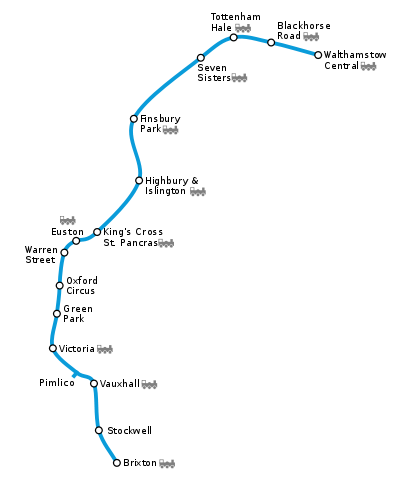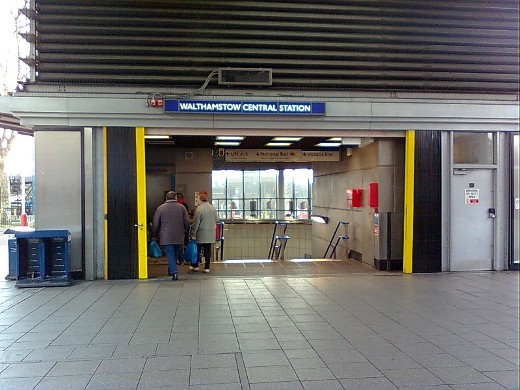
Walthamstow Central, the first station on the line, was opened as Hoe Street station by the Great Eastern Railway in 1870 and the name changed when the Victoria line opened in 1968. Like many stations on the Victoria line, the underground station was never completely finished. Rather than white panels being fixed to the ceilings above the platforms, the steel tunnel segments, painted black, were used to support the fixtures and fittings which has resulted in a poor lighting level. Also the middle escalator of three is missing, having been replaced by a concrete stairway. A beautiful tiled abstract pattern by Julia Black based on William Morris's designs adorns the walls of the Underground platform.
|
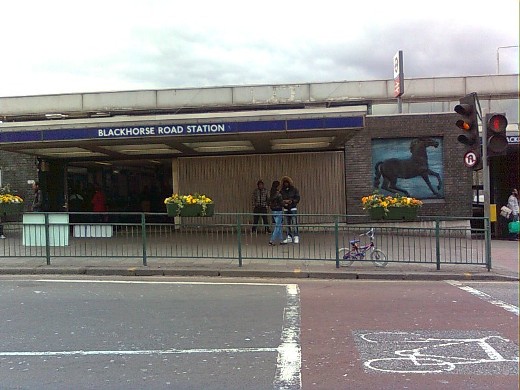
The walk to Blackhorse Road station goes through several housing areas criss-crossing the line underneath. Blackhorse Road station with its distinctive black horse on the wall beside the entrance, is the least used station on the Victoria line.
|
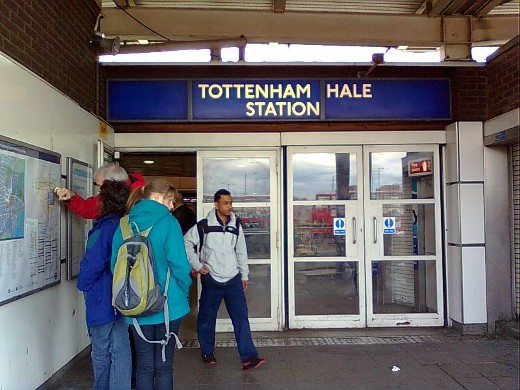
The route to Tottenham Hale station goes past and between several reservoirs but doesn't look as pretty as the maps suggest as the water is often hidden from view of the road.
|
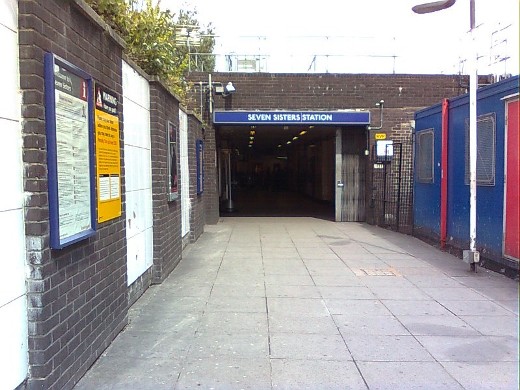
Seven Sisters station, the area taking its name from seven elms which were planted in a circle around a walnut tree. The trees were known as the Seven Sisters in 1732 but sadly no longer stand.
|
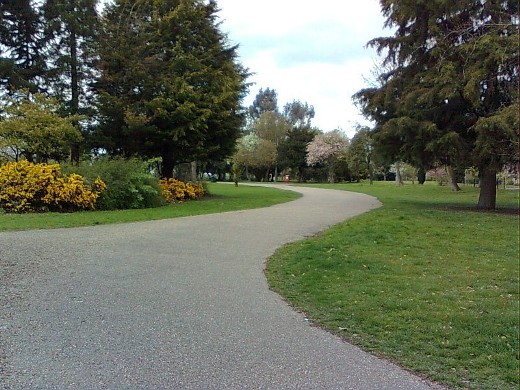
The walk to Finsbury Park station is a couple of miles long and takes us through the beautiful 115 acre Finsbury Park itself.
|
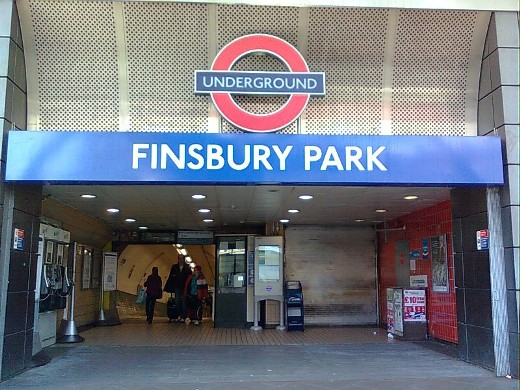
One of the three Finsbury Park Underground station entrances. The station is also served by the Piccadilly line. The walls of the station below are decorated with mosaics of hot air balloons and duelling pistols said to be based on the mistaken identification of Finsbury Park with Finsbury Fields which was situated between Moorgate and Old Street. Finsbury Fields was associated with duelling in the 18th century and also thought to be the site of one of the first hot air balloon flights.
|
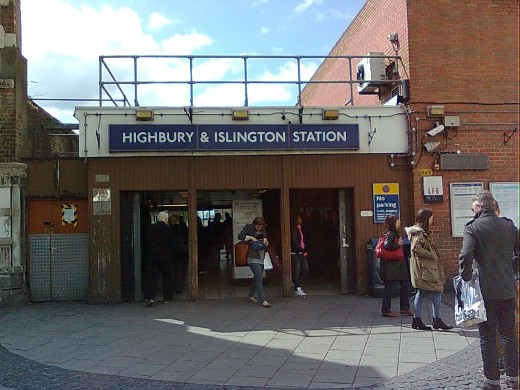
Highbury & Islington station.
|
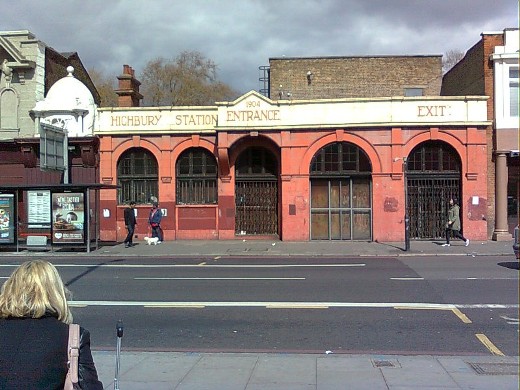
On the other side of Holloway Road stands the old station building dated 1904, closed long before the Victoria line was opened.
|
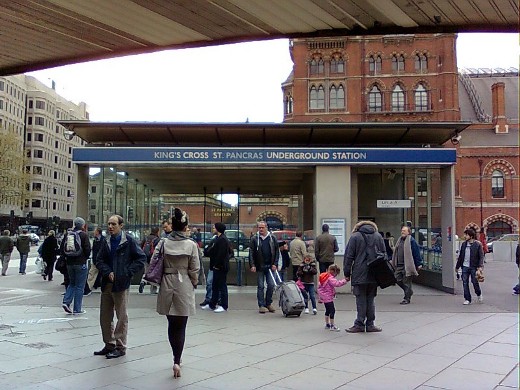
King's Cross St Pancras is the biggest interchange station on the London Underground serving six tube lines as well as two National Rail stations. The first Underground station at King's Cross opened in 1863 and has been rearranged several times since. The most recent upgrade to the Tube station was completed in 2010 with new ticket halls and 300 metres of new passageways being constructed.
|
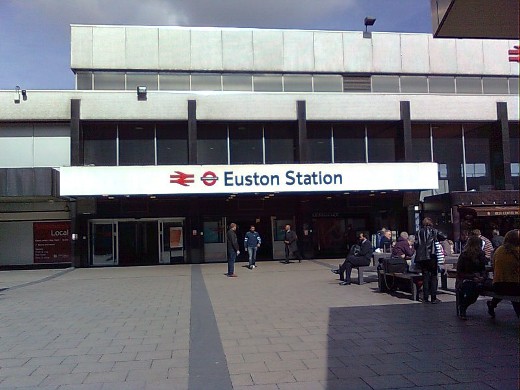
Walking straight along the Euston Road takes us to Euston station.
|
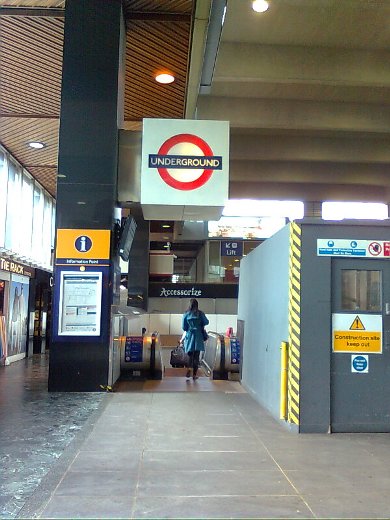
Inside the main Euston station, escalators lead down to the Tube line.
|
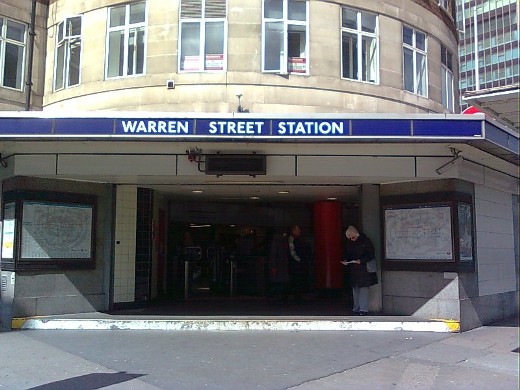
Warren Street station was opened as Euston Road station in 1907 and the name changed the following year, long before the Victoria line platforms were opened in 1968.
|
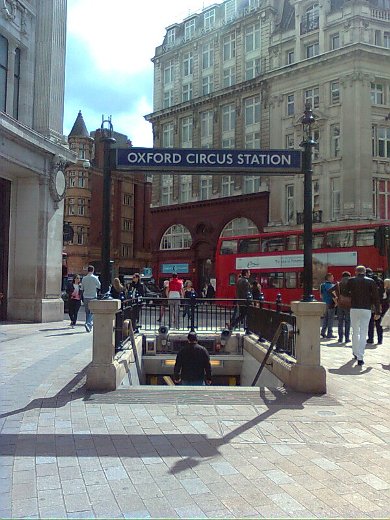
One of the entrances to Oxford Circus station on one of the four corners of the Oxford Circus road crossing.
|
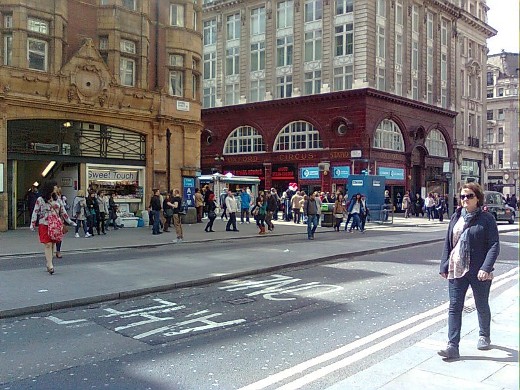
The two buildings of Oxford Circus station shown here were originally the Bakerloo line entrance on the right and the Central line entrance on the left. Now they are used as exits for passengers from all lines including the Victoria line.
|
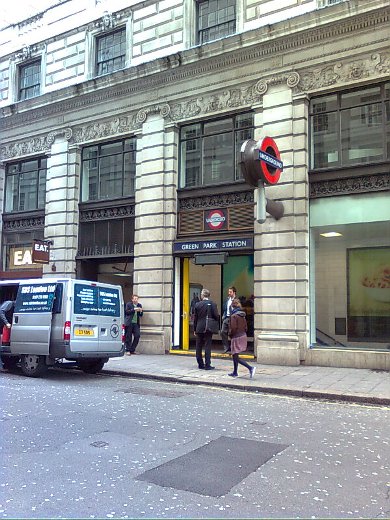
Green Park station.
|
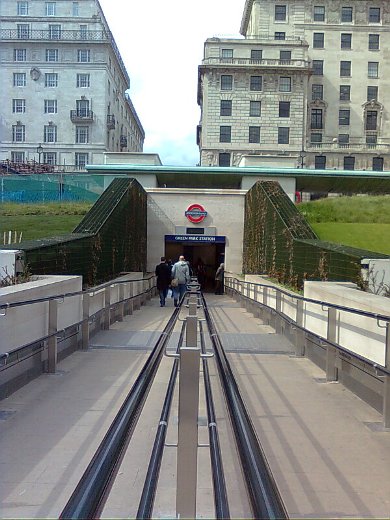
Another entrance to Green Park station from inside the park over the road.
|
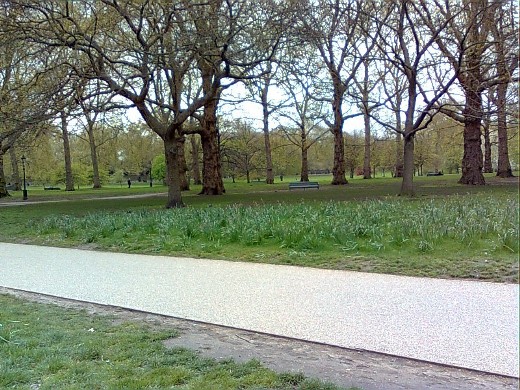
The walk to Victoria takes us through the lovely Green Park.
|
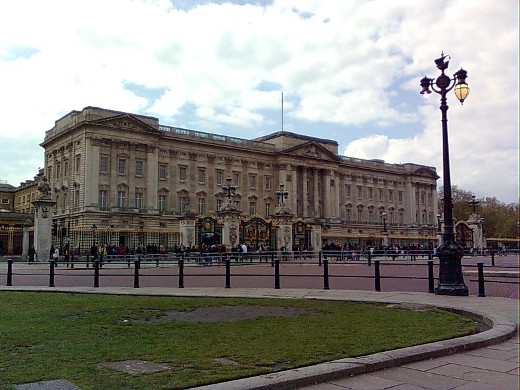
And past Buckingham Palace.
|
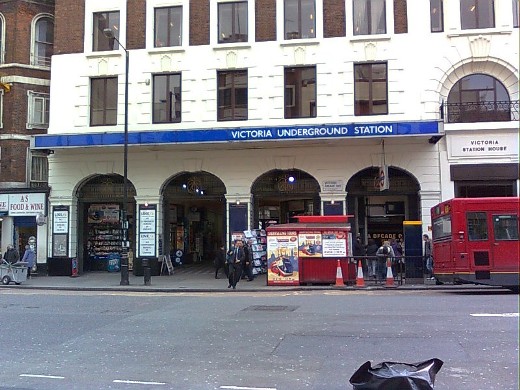
Victoria is the second busiest station on the Underground system after Waterloo. It consists of two stations connected by a pedestrian passage beneath the bus station. One side serves the District and Circle lines, and the deeper, newer station serves the Victoria line.
|
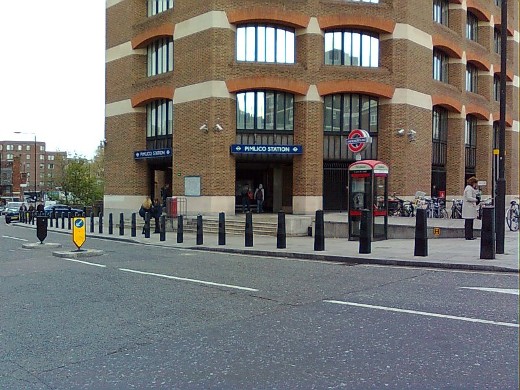
One of the three entrances to Pimlico station. The station was opened in 1972, a year after the line was operational.
|
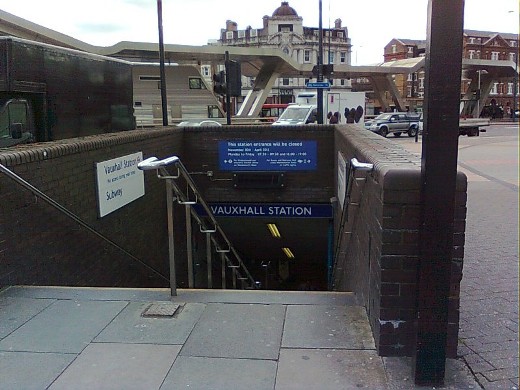
The walk to Vauxhall station takes us south of the river over the beautiful Vauxhall Bridge.
|
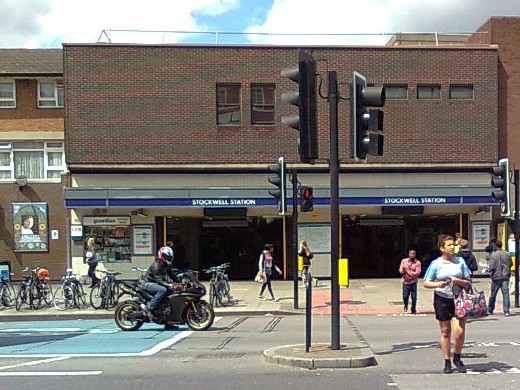
Stockwell station entrance.
|
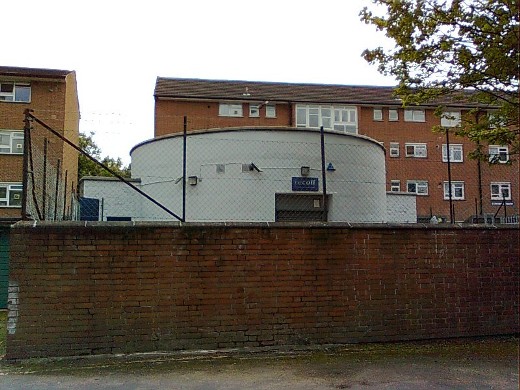
One of the two entrances and vents of the air raid shelter sited below Stockwell station. The shelter consists of two parallel tunnels each about six times the length of the current platform, split horizontally into upper and lower levels with various other smaller branch tunnels. The shelter was used by the government from 1942 until 1944 when it was used for a further year as a public shelter. It is now used for secure archiving.
|
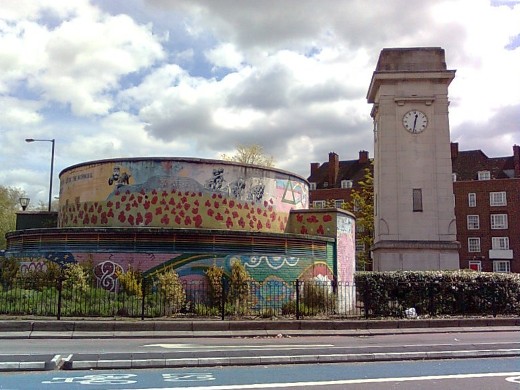
The other air raid shelter entrance now decorated as a war memorial.
|
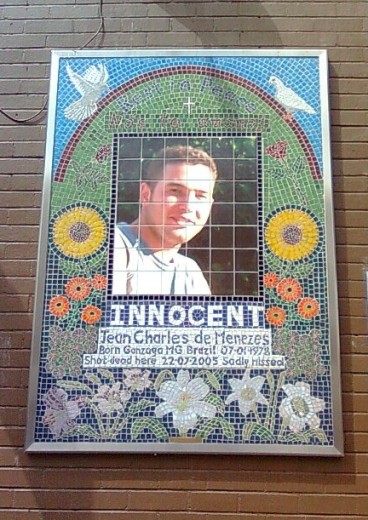
On the wall to the left of the station entrance, a memorial mosaic for Jean Charles de Menezes who was shot dead at Stockwell station by police officers in July 2005. Tragically it was a case of mistaken identity and de Menezes was completely innocent.
|
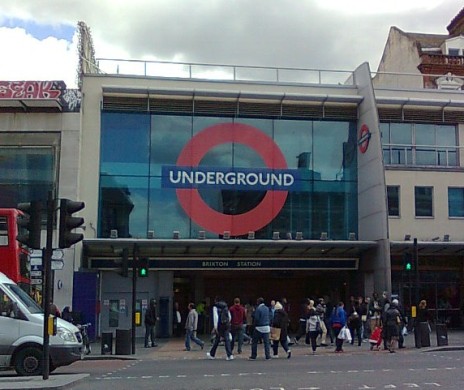
The modern entrance to Brixton station, the southern terminus of the Victoria line.
|
